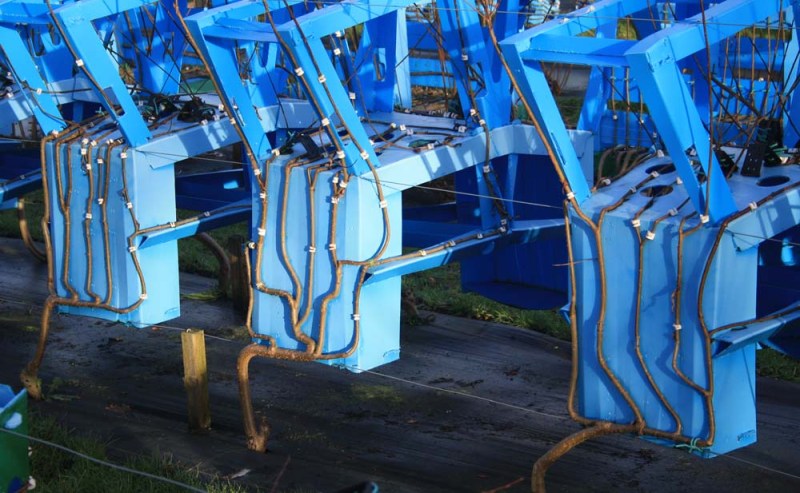[Gavin Munro] is turning the standard paradigm of furniture making on its head. Instead of harvesting trees and slicing them up into boards – or worse, turning them into sawdust to be used for particle board – [Gavin] is literally growing furniture.
Supple young willow saplings are pruned and trained using wire and plastic form work. The trees are encouraged to grow in the right directions to form legs, arms, seat and back, and eventually the individual pieces are grafted  together to continue growing into one solid piece. When the chair is mature, the leaves are removed, the chair is cut free from the ground, and with a little seasoning and finishing, you’ve got a unique and functional chair. And what’s more, since it’s a solid piece of wood, there are no joints to loosen over time.
together to continue growing into one solid piece. When the chair is mature, the leaves are removed, the chair is cut free from the ground, and with a little seasoning and finishing, you’ve got a unique and functional chair. And what’s more, since it’s a solid piece of wood, there are no joints to loosen over time.
You’ve got to admire the dedication that goes into these chairs. The current crop is about nine years old and still a few years from harvest. There’s a lot to be learned from the organization of a project like this – planning a production line where the first finished pieces are a decade or more from the showroom is no mean feat. Looks like [Gavin] has thought that through as well, by starting a line of lamps that will be turning a profit sooner. The video after the break demonstrates not only [Gavin’s] chairs and lamps, but also features his first harvest of tables.
Continue reading “Why Build Furniture When You Can Grow It?”













